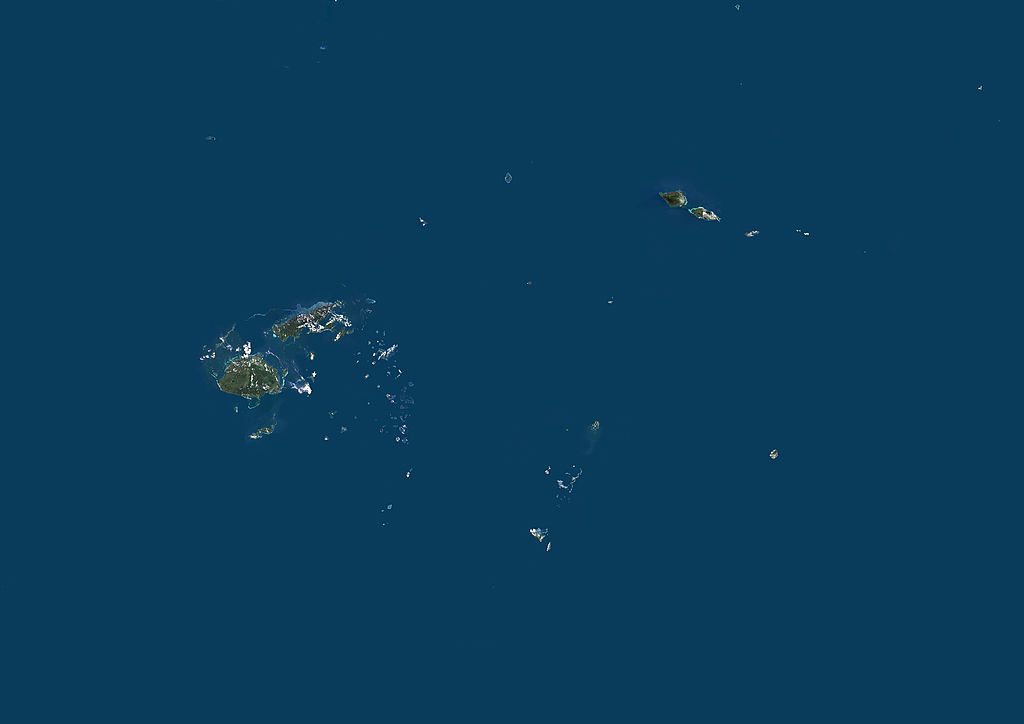Australia and New Zealand should help their island neighbours get into space
Posted By Khwezi Nkwanyana on June 24, 2021 @ 06:00

The benefits of space are boundless, but access to the domain is unequal. Wealthy countries can afford space programs and enjoy the advantages of investment in space technology, while low-income nations struggle to establish the ground infrastructure required to access those advantages.
Most Pacific island nations lack such wealth, and the governments of Australia and New Zealand need to do more to help them build long-term space capabilities.
Factors preventing South Pacific states from participating include lack of the expertise, resources and money needed to establish ground facilities [1] to access space services or to build small satellites. The accelerating development of space capabilities has bolstered some smaller states’ engagement in the space sector, but it hasn’t greatly benefited those in the southwest Pacific.
There are approximately 3,372 satellites [2] orbiting our planet but, with the exception of Australia and New Zealand, not one has been launched or operated by a Pacific island state.
Arguably, the Pacific islands’ main interest in space technology is to monitor extreme weather events and climate variations [3]. Global warming caused by climate change is generating fluctuating weather patterns, rising sea levels and extreme weather events that are already severely affecting Australia’s neighbours. Pacific islands states are among the most vulnerable [4] to climate change and face loss of land, infrastructure and exclusive economic zones. Low-lying nations fear they could be inundated as sea levels continue to rise.
Numerous space initiatives are underway to monitor climate instability in the region, such as the partnership [5] between the UK Space Agency and CSIRO that aims to provide satellite data to Pacific island states to assist them with decision-making; the UN’s Asia–Pacific plan of action [6] on space applications for sustainable development; and the UK government’s Common Sensing [7] project.
But there are no projects devoted to building the autonomous space capabilities of any Pacific island nation. This constrains their ability to develop skills and expertise that would enable them to move from being the recipients of space technologies to participating in the rapidly growing space economy.
The OECD estimates that annual global commercial revenue from the space industry is around US$280–300 billion [8] and the sector is predicted to be worth US$1.1 trillion in 2040 [9].
For Australia, which has a small and relatively young space sector compared with the United States, Britain and France, the economic contribution of the space industry is still significant. In 2018–19, the sector accounted [10] for 0.25% of GDP, generating around $4.8 billion and employing more than 10,000 people.
Considering our proximity to the Pacific island states, and our strategic interest in their security and economic stability, Australia and New Zealand are well situated to help build space capabilities in the region by offering education programs and helping to develop launch facilities.
The island nations lack the specific educational qualifications needed to establish large-scale space capabilities. In contrast, Australia has six [11] tertiary degrees in space-related fields and in New Zealand there are two higher education [12] courses [13]. Institutions such as the International Space University [14] periodically administer courses and training in Australia for those in the southern hemisphere. Through scholarships and transnational education programs, space-specific courses can build the expertise of Pacific island students and policymakers on campus and online.
Tertiary education is just one way to expand this knowledge. Professional development placements with the Australian Space Agency and New Zealand Space Agency would create pathways for Pacific representatives to develop space-oriented expertise. Cybersecurity, engineering, legal, science and policy degrees and experience are essential to forming space policy and creating space-based technologies. Island states’ education institutions are already skilling individuals in these areas, and Australia and New Zealand can help with on-the-job training.
Although small island nations can clearly benefit from access to space, they need to set the parameters of how they will apply these capabilities within their borders. Australia’s engagement with the Pacific islands has been viewed [15] by some as being driven by one-sided national-security concerns with key objectives decided by policymakers in Canberra.
Australia’s offer of assistance should be about supporting these states to realise their regional and national priorities, not just preventing major-power rivals such as China from advancing their influence in the region.
For Australia and New Zealand, helping Pacific islands to develop and maintain launch sites could further foster regional cooperation. Kiribati and Nauru are geographically optimal locations to deploy satellites into orbit because they’re very close to the equator. Having a communal launch site would further promote Pacific regionalism by securing multilateral agreements and encouraging joint space operations. If nations don’t want to launch from within their territories, Australia and New Zealand could offer to launch satellites for them.
Australia and New Zealand have the knowledge, skills and industries to help develop our island neighbours’ long-term autonomy and capacity in space. Time is finite, however, and collaboration is needed now, not later.
Article printed from The Strategist: https://www.aspistrategist.org.au
URL to article: https://www.aspistrategist.org.au/australia-and-new-zealand-should-help-their-island-neighbours-get-into-space/
URLs in this post:
[1] facilities: https://www.aspistrategist.org.au/space-2-0-in-the-indo-pacific/
[2] 3,372 satellites: https://www.ucsusa.org/resources/satellite-database
[3] extreme weather events and climate variations: https://earthobservations.org/documents/geo16/eo_for_the_pacific_report.pdf
[4] vulnerable: https://www.climaterealityproject.org/blog/trouble-paradise-how-does-climate-change-affect-pacific-island-nations
[5] partnership: https://www.csiro.au/en/news/news-releases/2019/uk-and-australia-team-up
[6] plan of action: https://undocs.org/pdf?symbol=en/ESCAP/CICTSTI/2018/4
[7] Common Sensing: https://www.commonsensing.org.uk/news/solutions-and-data
[8] US$280–300 billion: https://www.oecd.org/innovation/inno/measuring-economic-impact-space-sector.pdf
[9] $1.1 trillion in 2040: https://www.morganstanley.com/ideas/investing-in-space
[10] accounted: https://www.industry.gov.au/sites/default/files/2021-02/the-economic-contribution-of-australias-space-sector-in-2018-19.pdf
[11] six: https://search.studyinaustralia.gov.au/course/search-results.html?keyword=space
[12] higher education: https://www.auckland.ac.nz/en/engineering/our-research/discover/research-areas-and-facilities/aerospace-and-space.html
[13] courses: https://www.topuniversities.com/universities/auckland-university-technology-aut/undergrad/astronomy-space-science-major-bachelor-science
[14] International Space University: https://www.isunet.edu/
[15] viewed: https://www.griffith.edu.au/__data/assets/pdf_file/0026/1093427/strengthening-australias-pacific-relationship-policy-brief.pdf
Click here to print.